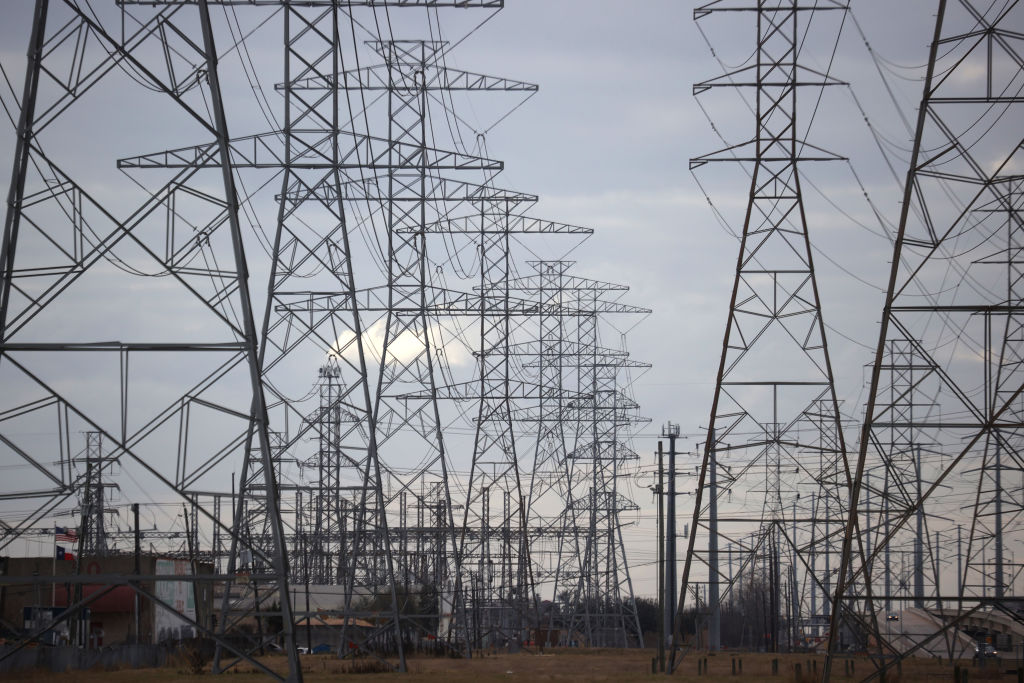
In the midst of a massive power failure in Texas two years ago, state Gov. Greg Abbott, a Republican, went on FOX News and laid the blame squarely at the feet of renewables. “This shows how the Green New Deal would be a deadly deal for the United States of America,” he said, referring to an unrealized progressive climate proposal. “It just shows that fossil fuel is necessary for the state of Texas.”
Wind energy was running low during the severe Winter Storm Uri, but as it turned out, it wasn’t renewables, but fossil fuels—particularly poorly winterized natural gas systems—that were primarily to blame for the cascading grid collapse that left 10 million people without power and 246 people dead. But two years later, as the state weathers another winter storm, Texas’s conservative-controlled state government remains bent on putting fossil fuels at the center of its plans to stop such a disaster from occurring again. That’s despite the urgent imperative to phase out carbon dioxide pollution and avert catastrophic climate change—and the existence of an array of cheaper new technologies and fixes that could help the grid draw less power in the first place.
Texas’s power system is unique in many ways. For one thing, it’s the only state that operates its own grid. This limits its ability to import power from other parts of the country when supplies run low, as they did when power systems froze and Texas residents cranked up their heat in February 2021. The largely deregulated power system also means that power producers only get paid when they put electricity onto the grid, rather than also getting compensated for being available in those high demand scenarios, as they are in other states. Those factors have created a grid liable to get overstretched when demand for electricity spikes. In an attempt to help, state regulators in January approved a wonky, never-before-used proposal known as a Performance Credit Mechanism (PCM), which requires the array of companies that sell Texans power to buy a special kind of credit from the energy companies that own the state’s power plants, representing a promise that those power plants will provide extra juice to the lines when the grid is under strain.
“We heard Texans loud and clear; they demand a reliable grid,” chairman of the state’s public utility commission (PUC) Peter Lake said in a statement after the plan was approved. “Today, we take another historic step toward building the grid of the future.”
The point is to provide a financial incentive for the companies to keep the grid from going under again when demand spikes, and to build new power generation infrastructure. The end result, however, appears to heavily favor fossil fuels over newer methods of managing the grid, like encouraging the use of smart thermostats and water heaters that can automatically lower power demand during peak periods—so-called “demand response”—or employing utility-scale batteries that can surge electricity onto power lines when the need arises.
It isn’t a subtle theme when state politicians talk about the issue of grid stability. Counterintuitively, Texas has the most renewable energy production of any state, more than 50 gigawatts, or about half its total grid capacity (renewables account for only about a fifth of power on the full U.S. grid, by comparison). That’s the product of its freewheeling, deregulated electricity system and abundant land for gathering solar and wind energy. And the industry is growing faster there than anywhere else in the country. Since 2021, for instance, the amount of wind and solar energy on the Texas grid has grown by almost 80%, according to statistics provided by the American Council on Renewable Energy. Those renewables do require backup solutions for when the wind doesn’t blow or the sun doesn’t shine, preferably ones that don’t further contribute to climate change, such as battery storage and high voltage transmission lines that can bring power from other regions where renewables are producing steadily—a difficult proposition as long as the Texas grid remains largely isolated from the rest of the country.
But the state is also home to a politically powerful oil and gas industry, and many members of Texas’s Republican government have been clear that they want those resources to be the answer to the state’s grid woes. Speaking to reporters last November, Texas Lieutenant Governor Dan Patrick emphasized his desire to “level the playing field” between natural gas and renewables. “We can’t leave here next spring,” he said in November of the upcoming state legislative session, “unless we have a plan for more natural gas power.”
The problem, though, is that those politicians are radically oversimplifying the issue, according to Doug Lewin, president of energy consultancy Stoic Energy. What would make more sense—both environmentally and financially—would be to use multiple solutions to make sure that peak grid demand does not exceed the supply. That could include building batteries to store renewable energy and release it when it’s needed (new long duration battery technology could be especially promising for those situations). It could also mean investing in fixes that make sure energy demand doesn’t spike as high when the temperature rises or falls, such as by better insulating homes, upgrading them with new heat pumps that draw far less power than older heating systems, and investing in demand-response.
By contrast, trying to simply build natural gas generation to cover the demand for energy that arose during the 2021 winter storm would be “insanely expensive,” Lewin says. “They’re trying to solve every problem on the grid with one thing,” he says. “That is just a logical fallacy.”
More Must-Reads from TIME
- Cybersecurity Experts Are Sounding the Alarm on DOGE
- Meet the 2025 Women of the Year
- The Harsh Truth About Disability Inclusion
- Why Do More Young Adults Have Cancer?
- Colman Domingo Leads With Radical Love
- How to Get Better at Doing Things Alone
- Michelle Zauner Stares Down the Darkness
Write to Alejandro de la Garza at alejandro.delagarza@time.com